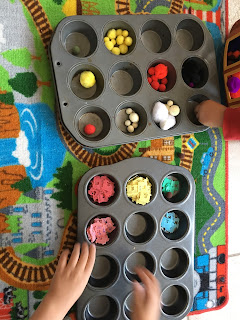
Sometimes it can be hard to get information from your child's teacher about what happens during the day. Likewise, it can be hard to get information from your child with ASD.
In our previous school, it was extremely difficult to get accurate information from the teachers. Often, we would get a response such as "he's doing fine". But fine can mean many different things:
1) Everything is going well
This was mean your child is following the routines, listening to directions, and interacting with the other children. Everything really is fine.
2)Your child is not disrupting the classroom
This one means that your child is not causing any problems for the teacher and other classmates. It also might mean that your child is involved in repetitive interests as a method of not being disruptive. But it also means that they are not necessarily learning anything and not interacting with the other children.
3) There are problems, but the teacher thinks they can handle it
This is what happened at our last school. We set up a meeting with the teacher early on in the school year to discuss what was happening. The teacher reported everything was going well. However, when we got his report card there were signs that this was not the case. For example it said, that he only follows directions when he wants to.
Here are some strategies you can try:
Determine the best way to communicate with the teacher
Determine which time of day is best for the teacher. For example, it may be best to try to call or meet during the teacher's spare versus after school. They may have other things they need to do after school (such as picking up their own kids).
Ask the right questions
If you ask general questions, everyone's first instinct is to say things are going fine. You can start with this general question. However, you should follow up with more specific questions. Here are a few examples: Is he interacting with the other kids?, Has he had any disruptive behaviours?, Is he following classroom routines? Is he doing the same level of school work as the other kids?.
Set up a communication log
You can try developing a piece of paper that is quick for the teacher to fill out and gives you meaningful information. It could include a section for desired behaviour (asking questions, playing with the other children, finishing school work) and disruptive behaviour (engaging in repetitive interests, aggression to the other kids, yelling or crying, intolerance to loud noises). Make sure it is simple and is not time consuming.

















































